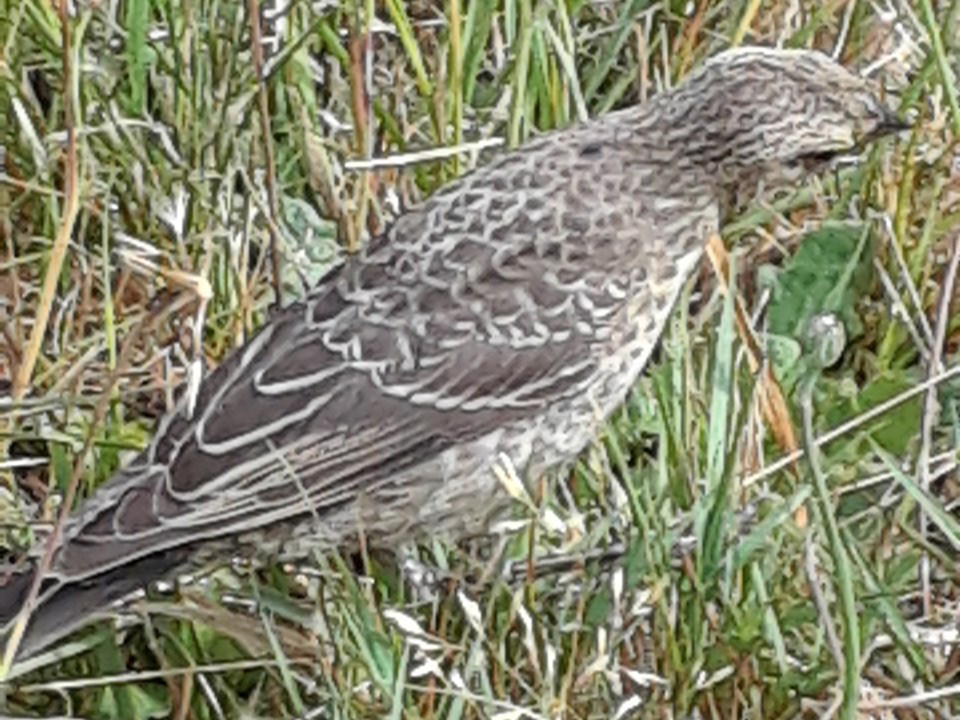HAPPY HOPPER: This friendly brown-headed cowbird was happily hopping after a farm’s residents, foraging as it went, but oblivious to the dangers.
Hatched this spring and recently fledged, people at the farm worried for its survival on the ground. Young, dumb and very cute, it was in good condition with no injuries, just very hungry.
The size of a blackbird, it hoovered up mealworms back at Powell River Orphaned Wildlife Society and showed itself quite capable of survival. It was released the next day near Kelly Creek on the pole line, away from cats and humans, and on an easy route for migration.
Extremely reluctant to leave the safety of the cage, it just sat there, looking confused, and had to be chased off. Eventually it flew over a ditch and onto a fence; it will find a flock to join for the journey.
They are in the second wave of migrating birds although cowbirds don’t fly very far relatively, only 850 kilometres. Because the females lay their eggs in the nests of other birds, abandoning their young to foster parents, the young ones don’t know how to be cowbirds.
Females forgo building nests and instead put all their energy into producing eggs, sometimes more than three dozen a summer. This creates a large calcium requirement. To satisfy it, they eat snail shells and sometimes eggs taken from nests they’ve visited, as well as seeds from grasses and weeds, with some crop grains and insects such as grasshoppers and beetles.
They get their name from their close association with grazing livestock, which flush up insects for the birds to eat.



